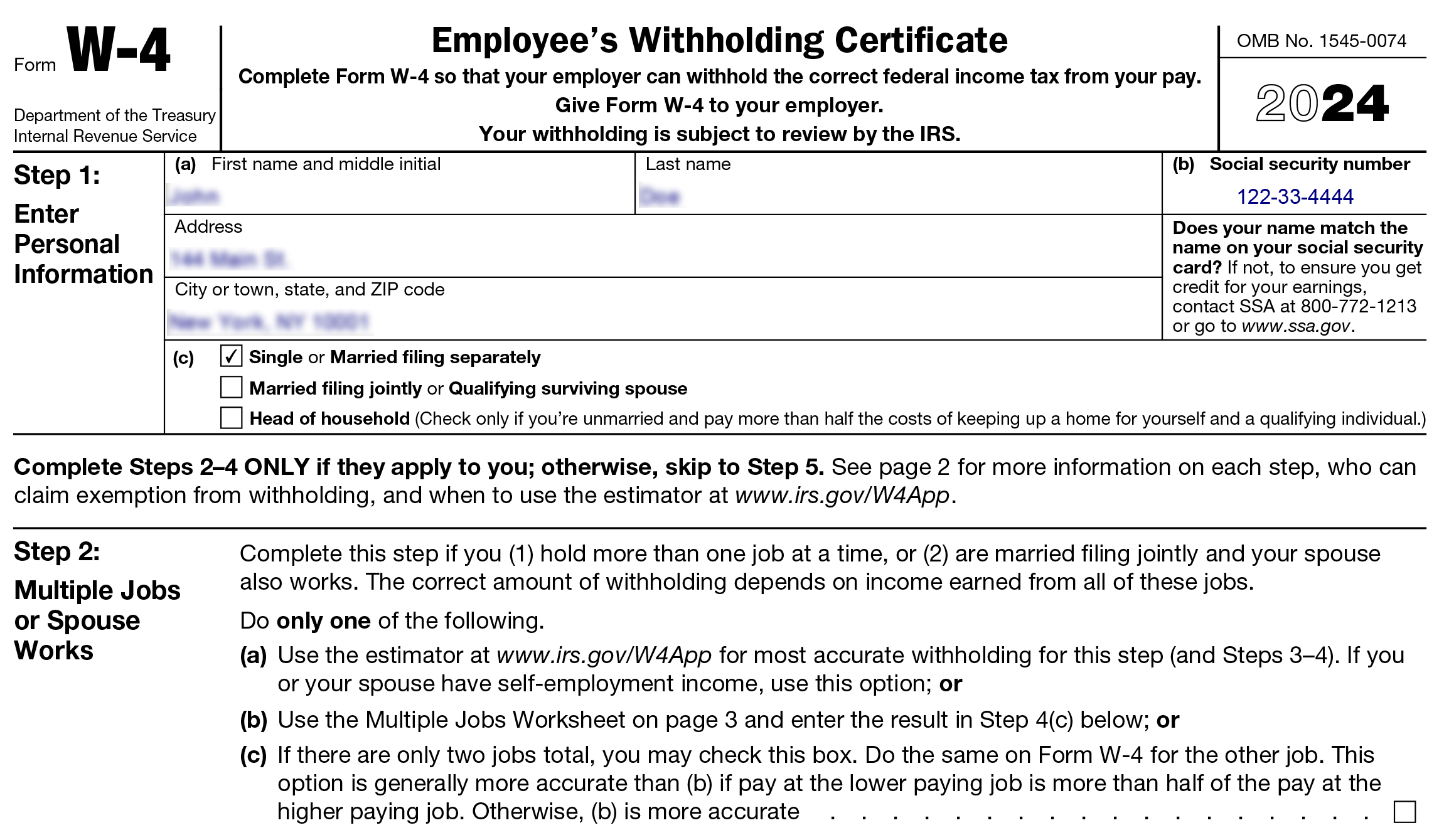How to Do Payroll Yourself
Here is the step-by-step guide for managing the payroll for your business
How to Do Payroll by Yourself - A Complete Guide for Small Businesses
Managing the payroll is one of the complex tasks involved in running a business. With so many numbers and calculations to deal with, it’s crucial to ensure accuracy in every aspect of the payroll process.
However, in spite of the complexities involved, you can efficiently handle the payroll process on your own if you have a clear understanding and
strategic planning.
This guide helps you understand the basic aspects of payroll and how to manage the payroll process effectively on your own rather than relying on payroll service providers. Steps to Manage Payroll for Your Business are as follows:
1. Register Your Business
Before starting to manage the payroll, it’s obvious that you must register the business officially. This involves:
- Business Name Registration - You must register your business with the Secretary of State.
-
Apply for EIN - Obtain the Taxpayer Identification Number (TIN) for your business. Typically, businesses are provided with an Employer Identification Number (EIN) unless the business type is Sole Proprietor or Single Member LLC.
In order to obtain an Employer Identification Number for your business, you must submit an application to the IRS. There are two ways for that:
- You can file Form SS-4, Application for Employer Identification Number (EIN)
(or)
- Submit an online application. To learn how, click here.
Note: While the EIN is applicable only to federal identification purposes, you may need to obtain a separate tax ID number from the state agencies as well.
- Registration with DOR and DOL - Then, you must register your business with the Department of Revenue (DOR) and Department of Labor (DOL)
- Registration with EFTPS - In order to deposit the taxes, you must register your business with the EFTPS, i.e., the Electronic Fund Transfer Payment System.
-
DBA Name Registration - If you have a separate Trade Name/Doing Business As Name other than the one you registered earlier, you must register
that as well.

2. Obtain Tax Information from Employees
Once you have the EIN ready, you must obtain the necessary taxpayer information from your employees. This information is necessary not just for identity purposes but also for understanding the withholding requirements for each of your employees. Typically, this is obtained through Form W-4:
Form W-4, Employee's Withholding Certificate - The form W-2 is applicable to all your full-time employees. With this form, you can get to understand the employee’s filing status, whether they are working for multiple businesses, and the applicable voluntary withholdings and adjustments. In 2020, this form underwent a major revision in terms of structure and fields, making it more simple to complete.

It’s recommended that you obtain these forms from your employees as soon as you hire them. Also, make sure the latest version of the forms are used.
3. Determine Your Payroll Schedule
In simple, the payroll schedule is the time frequency with which you pay your employees. To determine the payroll schedule that fits your business, you must clearly understand how each schedule works:
- Daily Payroll Schedule - Your employees will be paid everyday.
- Weekly Payroll Schedule - Your employees will be paid every week.
- Biweekly Payroll Schedule - Your employees will be paid every alternate week.
- Semi-Monthly Payroll Schedule - Your employees will be paid twice a month, typically on the 1st and the 15th of the month.
- Monthly Payroll Schedule - Your employees will be paid every month.
- Quarterly Payroll Schedule - Your employees will be paid every quarter.
- Annual Payroll Schedule - Your employees will be paid every year.
Based on your business type and requirements, choose the payroll schedule applicable to your employees.

4. Calculate Gross Payment
Here comes the calculation part! Generally, gross payments for your employees are calculated by multiplying the number of hours they worked with their
hourly wage rate.
For hourly employees:

Annual Gross payment = No. of hours worked x Hourly rate x No. of pay periods
For salaried employees:

Annual Gross payment = Salary per pay period x No. of pay periods
Before fixing the wage for your employees, it’s essential to make sure that the wage rate you fix stays in line with the federal and state wage laws.
In case the employee has worked overtime, the applicable overtime pay must be included as well. Also, the gross pay will include bonuses and sick/family leave allowances, if any.
5. Determine Necessary Deductions
For each employee, the percentage or the amount of taxes you need to withhold may vary. To determine the withholding requirements for an employee, you can refer to the W-4 shared by them. Based on that, you must determine the amounts that need to be withheld from the gross pay.
Also, it’s important to note that there are two different types of deductions:
- Non-voluntary deductions
- Voluntary deductions
Non-Voluntary Deductions
These are deductions that are mandatory as per the law for any employee. Typically, the non-voluntary deductions involve the following taxes:
-
Social Security Taxes and Medicare Taxes (FICA Taxes)
Federal Insurance Contributions Act (FICA) requires you to deduct Social Security Taxes and Medicare Taxes from each of your employee’s paychecks. Typically, both the employees and employers are required to contribute equally to these taxes. To find out the FICA tax percentage for the 2024 tax year, click here.
-
Federal and State Income Taxes
In addition to FICA taxes, the employees may also be subjected to federal and state income taxes. The income taxes can be calculated in two ways:
- Percentage Method
- Wage Bracket Method
-
Garnishments
Garnishments are withholdings that you may need to make as required by court order for debt payments such as child support.
Voluntary Deductions
These are deductions that aren’t mandated by the law. However, the employee can choose to have a certain amount deducted from their gross pay for any specified purpose. This may include:
- Health Insurance
- Dental Insurance
- Retirement Plans (401k)
- Cafeteria Plans (HSA & FSA)
- Other Benefits(Pre-tax and Post-tax)
Considering all these, calculate the amount of deductions from the gross pay of each of your employees.
6. Calculate Net Payment
Net payment is the amount of wages that your employees will receive after all the deductions.
For example, let’s say your employee John’s gross pay is $150/month, and his payment is subjected to $25 of deductions. In this case, John's net pay will be $125.
Once you determine the net pay, you can pay your employees on the scheduled payday as per your payroll schedule.
7. Calculate Your Contributions
While the deductions are amounts that will be deducted from your employees’ paychecks as taxes, there are certain other taxes that you need to contribute for each employee. Here are they:
-
FICA Taxes - As mentioned earlier, FICA taxes aren’t just paid by the employee but the employer as well. One-half of the Social Security and Medicare taxes are deducted from the employee’s paycheck, whereas you will need to contribute the other half of taxes to the government.
Taxes For Employee For Employer Social Security Taxes 6.2% 6.2% Medicare Taxes 1.45% 1.45% Note:
- For Social Security Taxes, the wage base limit is $168,600.
- For medicare taxes, an additional 0.9% of taxes will be charged if the annual cumulative wage exceeds $200,000.
-
FUTA and SUTA - In order to provide financial security for unemployed individuals, the FUTA (Federal Unemployment Tax Act) and SUTA (State Unemployment Tax Act) require you (employers) to contribute a certain percentage of taxes for every employee.
To learn more about FUTA and SUTA, click here.
8. Report and Pay Your Payroll Taxes
The most crucial part of payroll processing is tax preparation, filing, and payment!
Tax Filing
There are different payroll tax forms available, and it’s important that you choose the applicable tax form for your business. Here are some of the commonly filed payroll tax forms:
-
Form 941 - This is a quarterly return that you must file for your business to report income taxes, Social Security taxes, or Medicare taxes that are withheld from your employees’ paychecks.
Note: If the total taxes you withheld are less than $1000 for the quarter, you can file Form 944 instead of 941.
- Form 940 - This is an annual return that you must file to report income FUTA taxes.
-
Form 943 - This is an annual return that must be filed by agricultural workers to report the Social Security and Medicare Taxes withheld
in employees’ wages. - Form W-2 - This is an annual return that you must file to report the wages paid to employees and the taxes withheld on their paychecks.
Among all these forms, you can choose and file the tax form that is applicable to your business.
Tax Payment
All the taxes you withheld from your wages as well as your FUTA taxes, are required to be deposited to the IRS. This can be done through the EFTPS (Electronic Fund Transfer Payment System).

Let TaxBandits Take Care of Your Payroll Tax Filings!
TaxBandits, the IRS-authorized e-file provider, can streamline your payroll tax preparation and e-filing of 941, 940, W-2, and other payroll forms.
The comprehensive e-filing solution offers numerous helpful features to ensure a hassle-free filing experience for you.
Get Started Now


